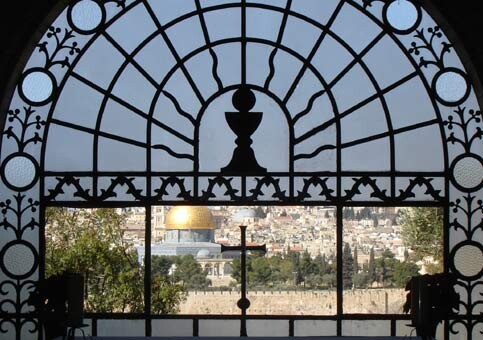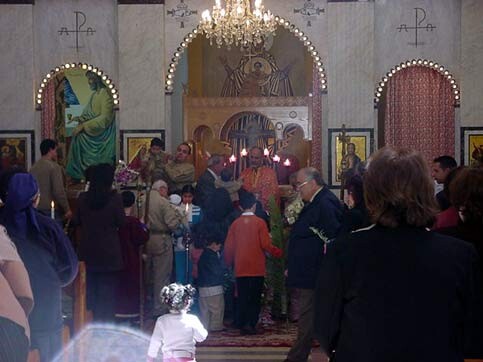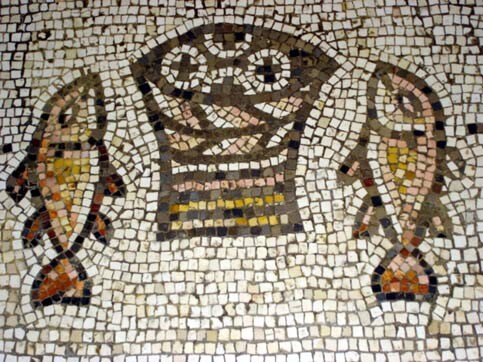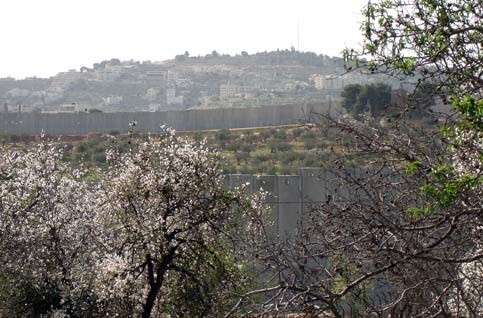My Catholic Brother Alain Soral is wrong to call for NATIONAL RECONCILIATION, when there is no French NATION anymore, but only A ZIONIST FREEMASONIC ONE!
WESTERN FREEMASONIC SATANDOM CREATED APARTHEID ISRAEL!
QUAND LE MENSONGE GOUVERNE LES PEUPLES!
Ceci dit, je n’en connais
aucun des peuples qui ne méritent pas d’être gouverné, voire tyrannisé par le
mensonge. Le mensonge c’est l’arme
absolu des conquérants et des génies qui nous gouvernent dans l’ombre et
ouvertement car le peuple est de tous temps stupide, et se laisse toujours
manipuler par les plus forts et les plus malins. Depuis Sumer, anciennement le Sud de la
Mésopotamie (sauvagement coupée en deux, Iraq et Kuwait, par les envahisseurs
britanniques, alors même que les occidentaux considéraient cette région comme
le BERCEAU DE LA CIVILISATION, comme ils ont fait en Hindoustan qu’ils ont tout
aussi sauvagement coupé en deux, Inde et Pakistan) alors même que ces mêmes barbares
considéraient l’Hindoustan comme le tout premier ÉTAT MODERNE du monde, dans un
but très précis, DIVISER POUR RÉGNER, l’arme absolue des Illuminati de Bavière
et d’Écosse (Rothschild, Rockefeller, Warburg, Goldman Sachs, monarchie
britannique, et compagnie !), cette organisation secrète de la franc-maçonnerie
de la Dynastie Rothschild, le monde dit civilisé n’a su apporté le bonheur et a
paix durables aux peuples parce que toutes les armées partaient à la conquêtes
de nouvelles terre, soit pour cohabiter paisiblement et partager la vie, soit
pour exterminer (génocide, dans de nombreux cas !) les peuples considérés
inférieurs et indésirables, détruire leurs civilisations, piller leurs
richesses, et réduire en esclavage physique ou économique les survivants des
plus infâmes et gigantesques holocaustes de l’histoire humaine, surpassant
mêmes les cruautés et abominations des barbares et conquérants grecs, romains,
et mongoles.
Les Sumériens parlaient
arabe « akkadien » comme d’autres paraient arabe assyrien, arabe syriaque,
arabe phénicien, arabe palestinien, arabe
araméen, arabe égyptien qui donna naissance à l’arabe hébraïque, etc.
Mais, les racistes optèrent pour le label « sémitique »
dont le but fut de ne rien créditer aux Arabes qui avaient inventé le tout premier
alphabet (comme l’indique la Stèle de Rashida (Rosetta), que les « Hébreux »,
les Grecs, et les Romains adoptèrent plus tard.
Le terme « sémite » est une fabrication (falsification!) occidentale. Mais, les arabophones ont conservé leur
alphabet classique à nos jours, et leurs
textes religieux sont toujours dans cette même langue originale alors que, par
exemple, la langue hébraïque a subi des modifications en Babylone.
Le "Proto-Sinaïticus" qui donna
naissance à l’alphabet arabe ancien du Sinaï (Arabie et Égypte) date de circa 1800 et
1900 avant l’ère commune (BC). Mais, l’alphabet le plus répandu fut développé
par les Arabes de Phénicie quelques 700 ans plus tard, le même utilisé par les
Arabes de la péninsule arabique.
J’appris à l’école coloniale anglaise
que les ARABES avaient découvert l’île Maurice, voulant dire PHÉNICIENS ! Donc, les PHÉNICIENS étaient aussi des ARABES !
POUR RAPPEL
Les Arabes ou Arabophones adoraient Dieu qu’ils
appelaient EL, ILAÏ, LAH, ELAH, AL LAH, et une déesse AL LAAT, et une autre
divinité HU BAL (BAAL), ADONAÏ (Adonis, Palestine), etc., et les Palestiniens
adoraient avant l’arrivée du Sumérien (d’UR) Abraham dans la région ou des
bandits et pillards appelés les Égyptiens et les Arabes HIBIRUS ou Hébreux. Des ARABES aussi étaient des habitants de Sumer ! Pourquoi Abraham ne fut-il pas ARABE lui
aussi ?
Il est risible d’entendre
les Américains de la Corporation judéo-britannique des États-Unis (USA) ou les
Français pleurnicher sur la violation de leur « Constitution » respective
ou sur les atteintes à souveraineté de leurs peuples, alors qu’ils ne cessent
de vilipender, calomnier, ou diffamer, d’attaquer, de persécuter les Musulmans
qui désirent respecter leur Constitution, en arabe SHARI’A. Ils se disent terrorisés rien qu’à entendre
ce mot “Constitution” en arabe! La haine
de l’Arabe, de la langue arabe, de l’Islam, religion ABRAHAMIQUE et CHRISTIQUE qui
englobe le Judaïsme de la Torah (Israël en Palestine) et le Christianisme des
Évangiles (Nazareth en Galilée), et des Musulmans perdure et s’amplifie. Les Judaïques et les Sionistes se vantent d’une
guerre d’extermination entre Chrétiens et Musulmans d’où ils espèrent voir
Israël de l’Apartheid en sortir vainqueur sans se battre ! Oy Vey !
BAFS
Ce lundi 25 février
2019
P.S. SATAN :
Bravo, beau travail, mon ami !
Christianity in Palestine: Misrepresentation and Dispossession
The Electronic Intifada
2 August 2006

“You are a Christian?” a foreign tourist inquires with marked disbelief of a Palestinian tour guide in Bethlehem. “When did you convert?” This response by foreigners, Christian or not, is unfortunately not uncommon in Palestine. Even in Bethlehem, the origin to which many trace the very roots of their Christian faith, this disbelief goes hand-in-hand with tourists’ visits to the Church of the Nativity — visits that seem to carry with them some image of a time long past with only archaeological or religious sites remaining with little consideration for the “living stones” that have continuously borne witness to this tradition for two millennia.
Many Christians from the Global North have a hard time seeing and relating to Christianity in the Arab world as living, vibrant communities of faith with rich spiritual and theological traditions. This may be partly due to a lack of understanding about the shape of Christianity in other parts of the world, but may also be partly due to the often racist and ethnocentric notions of what a Christian should look like.
Christianity in the Arab world has had a long and lively history, including in Palestine, where one still finds today communities of faith that stretch back thousands of years to the very beginnings of the church, where Arabic is spoken in liturgies and sermons, and where the church has played an integral role in the development of society, whether in terms of providing leadership in very difficult times or in pioneering valuable social services like education.
Today, of the roughly 3.9 million Palestinians living in the Occupied Territories, less than two percent are Christians. Of the 1.4 million Palestinians living inside Israel, meanwhile, roughly eight percent belong to Christian communities. Though small, these communities bear witness to two millennia of continuous Christian presence in the land called “holy” by much of the rest of the world.

Palestinian Christians belong to several traditional communities of faith, communities that can be grouped into four broad categories. The first are the traditions of the Eastern Orthodox churches. These would include the Greek Orthodox communities, claiming a continuous presence in the Holy Land since the times of the apostles. The second group is made of up what is sometimes referred to as the “Oriental” Orthodox churches, such as the Syrian, Coptic, and Armenian Orthodox communities. A third category consists of those churches belonging to the Catholic family of churches. In addition to Roman Catholic communities, referred to in the Middle East as the “Latin” church, one finds “Eastern Catholic” or “Eastern Rite Catholic” churches. These churches, though in communion with Rome and recognizing the authority of the pope, have maintained their own distinctive liturgy and traditions. Members of such communities as Greek Catholic or Syrian Catholic outnumber the number of “Latin” Catholics in Palestine and have a long history of involvement in the Palestinian struggle for justice. Finally, there are various Protestant communities, including not only Anglican and Lutheran churches, present since the nineteenth century, but also independent evangelical churches, including Baptist, Pentecostal, and more. Today in Palestine, Christianity is experiencing what many would consider a crisis. This is not due to the growth of so-called Islamic fundamentalism or the persecution of “believers” by their Muslim neighbors, misrepresentations that are unfortunately used to distract from the realities of occupation. Instead, the plight of the Palestinian Christian is very much connected to that of the Palestinian Muslim in that both, whether in the Occupied Territories or inside Israeli itself, are experiencing daily injustices at the hands of oppressive and discriminatory policies imposed on them by the Israeli government.
Palestinian Christians, like their Muslim brothers and sisters, have experienced a long history of dispossession and have not been immune to Israeli policies of occupation and discrimination. If anything, they have felt more strongly the feelings of forsakenness, knowing full well that many Christians in North America and Europe support without question the state of Israel in its oppression of their people. Daily experiences of humiliation at checkpoints, of land confiscation to make way for the separation barrier, the illegal occupation and colonization of Palestinian territory, lack of mobility and access to basic services, unemployment, poverty, and no sense of hope for a better future for their children have all contributed to this growing emigration of Palestinian Christians from the historical land of Palestine.
Like their Muslim neighbors, who are prevented by checkpoints and roadblocks from making pilgrimage to the Al-Aqsa Mosque in Jerusalem, Christians in the West Bank and the Gaza Strip are denied basic religious freedoms, routinely prohibited from traveling very short distances to worship in one of the most holy sites in Christianity — the Church of the Holy Sepulcher in the Old City of Jerusalem, where the church commemorates Jesus’ crucifixion, burial, and resurrection from the dead.

For the Palestinian Christians of Bethlehem, for example, traveling the six-mile (ten-kilometer) distance to Jerusalem’s Old City is impossible without special permission. Roughly half of Bethlehem’s residents are Christian. Church leaders estimate that over 2,000 Christians have emigrated from the Bethlehem area since September 2000, representing a decline of more than nine percent of Bethlehem’s total Christian population. [1] Rev. Alex Awad, Palestinian pastor of the East Jerusalem Baptist Church, reminds us that “Palestinian Christians have existed in the Holy Land since the day of Pentecost and have kept the torch of Christianity burning faithfully for the past two thousand years.” The erosion of Christianity in her birthplace, he poignantly observes “is a loss for the body of Christ everywhere. Can we imagine the Holy Land devoid of the Christian presence and a church which has been a faithful witness for Christ since the day the church was born?” [2]
Unfortunately, various reportings of this phenomenon has revealed stereotypes in North America and Europe that continue to see the root socio-economic problem for Palestinian Christians as their Muslim neighbors. It is disconcerting that the portrayal of the Christian absence in Palestine, for example, is often played off as the fault of Muslims and not of the illegal Israeli occupation, as if Muslims are oppressing Christians and that this is the root of the problem for Palestinians. It is the occupation that has made life so difficult that many Christians have moved from Palestine. This continues to be a serious problem, ignored especially by “Christian” tour groups who while visiting the “Holy Land” seldom bother to even come to Bethlehem to see these ancient sites, let alone see these Christian communities and recognize their existence.
These attempts to frame this conflict in such anti-Muslim ways only distracts (often intentionally) from the burden of responsibility that sits squarely on the shoulders of the state of Israel and its intentional violation of international law and the U.S. for its 100 billion dollar financing of this structure of violence and death.
An example of this is a resolution that is currently being circulated around the U.S. House of Representatives claiming to be concerned about the plight of Palestinian Christians and their diminishing presence in Palestine. Yet this resolution makes no mention of the root causes of this conflict but instead blames Palestinians themselves for their own victimhood, grossly misrepresenting this situation and the Palestinian people.
Only recently, while the world fixes its gaze on the ongoing Israeli assault on the people of Lebanon — both Muslim and Christian — and gives little attention to Gaza and the Israeli-caused humanitarian disaster for the million and a half people living there, the Israeli military has begun uprooting ancient olive trees in Bethlehem’s Cremisan area, marking out the path of the separation barrier to be built through one of the regions most valuable heritage sites.

The Cremisan area is of significant heritage value, home to the only winery in Palestine and two monasteries. Some of the finest examples of the regions ancient terraced landscape can be found here. The wall will carve through these terraces destroying agricultural landscapes that have survived for centuries. When the wall is completed, Beit Jala district of the Bethlehem area will have lost access to two-thirds of its land.
It is not the Palestinian Muslim population that is responsible for the expropriation of more land for the construction of this 430-mile/700-kilometer separation barrier. It is not the Palestinian Muslim population that is responsible for the expansion of illegal settlements and the creation of a “Greater Jerusalem” depopulated of its Palestinian citizens. It is not the Palestinian Muslim population that is responsible for the checkpoints that obstruct mobility, nor the demolition of homes and other forms of collective punishment. It is not the Palestinian Muslim population that is responsible for the “one big prison” status of Gaza. It is not the Palestinian Muslim population that is responsible for this separation barrier that will become the de facto border of a “Palestinian State” composed of several isolated islands of land on roughly 40 to 50 percent of the West Bank. It is not the Palestinian Muslim population that will be responsible for, absent a viable, contiguous Palestinians state, the “reservation” life that will parallel the Native North American experience in the United States. No, it is the ongoing Israeli structure of occupation and dispossession that continues to devastate Palestinian livelihood for both Christian and Muslim alike.
At a time when the U.S. Congress is considering the plight of Palestinian Christians, they are witnessing the destruction of their community’s land, heritage and livelihood. The people of Bethlehem have been very clear in their message to the international community, “If you want to help us, stop the construction of Israel’s Wall.” [3]
Anyone who lives in this society long enough is aware of tensions that might exist between Christians and Muslims. Palestinians society like any other society in the world is dealing with its own problems. But to focus on this internal tension to the exclusion of other factors is missing the mark and emptying this issue of its context.
It is indeed hard to be Palestinian Christian these days. But it is also hard being a Palestinian Muslim. The fact of the matter is that it is hard simply being a Palestinian.
Timothy Seidel is a peace development worker with Mennonite Central Committee in the Occupied Palestinian Territories where he has lived for the past two years.
Footnotes
[1] For more on these conditions in Bethlehem, see the report from the Office for the Coordination of Humanitarian Affairs (OCHA) and the Office of the Special Coordinator for the Peace Process in the Middle East (UNSCO), “Costs of Conflict: The Changing Face of Bethlehem” (December 2004).
[2] See Rev. Awad’s article in “Christian Zionism and Peace in the Holy Land,” MCC Peace Office Newsletter 35/3 (July-September 2005).
[3] See Open Bethlehem’s report “Bulldozers start work on Wall to annex Bethlehem’s Cremisan Monastery,” and the Urgent Appeal from the city of Beit Jala in Bethlehem district.


No comments:
Post a Comment